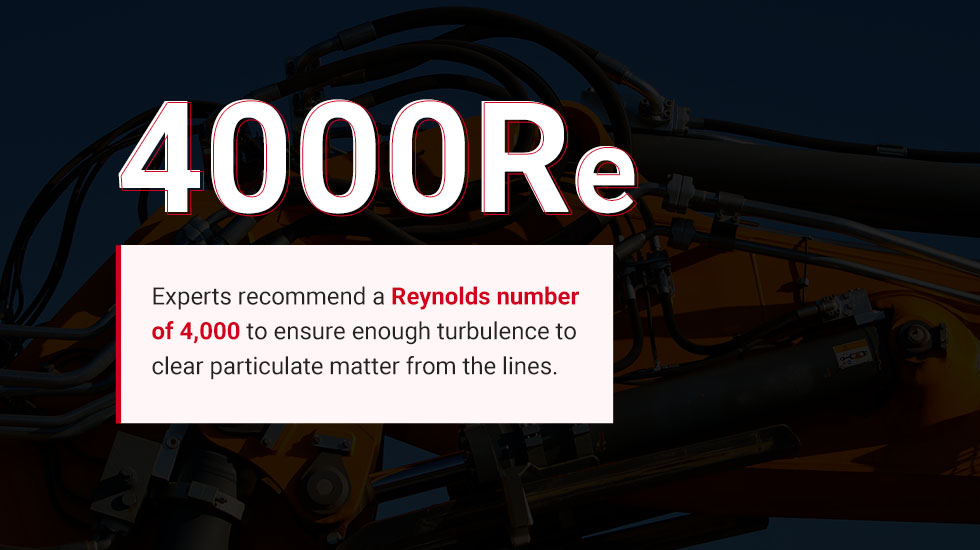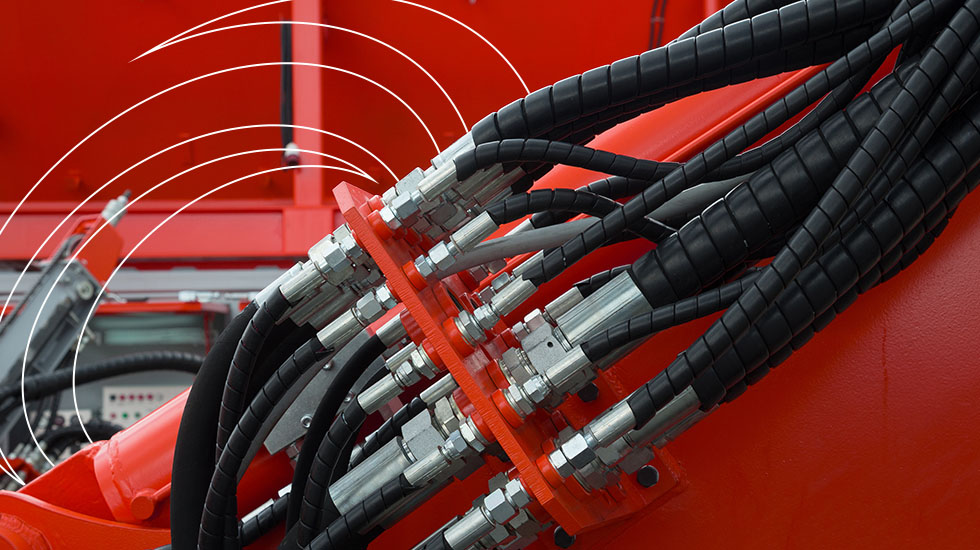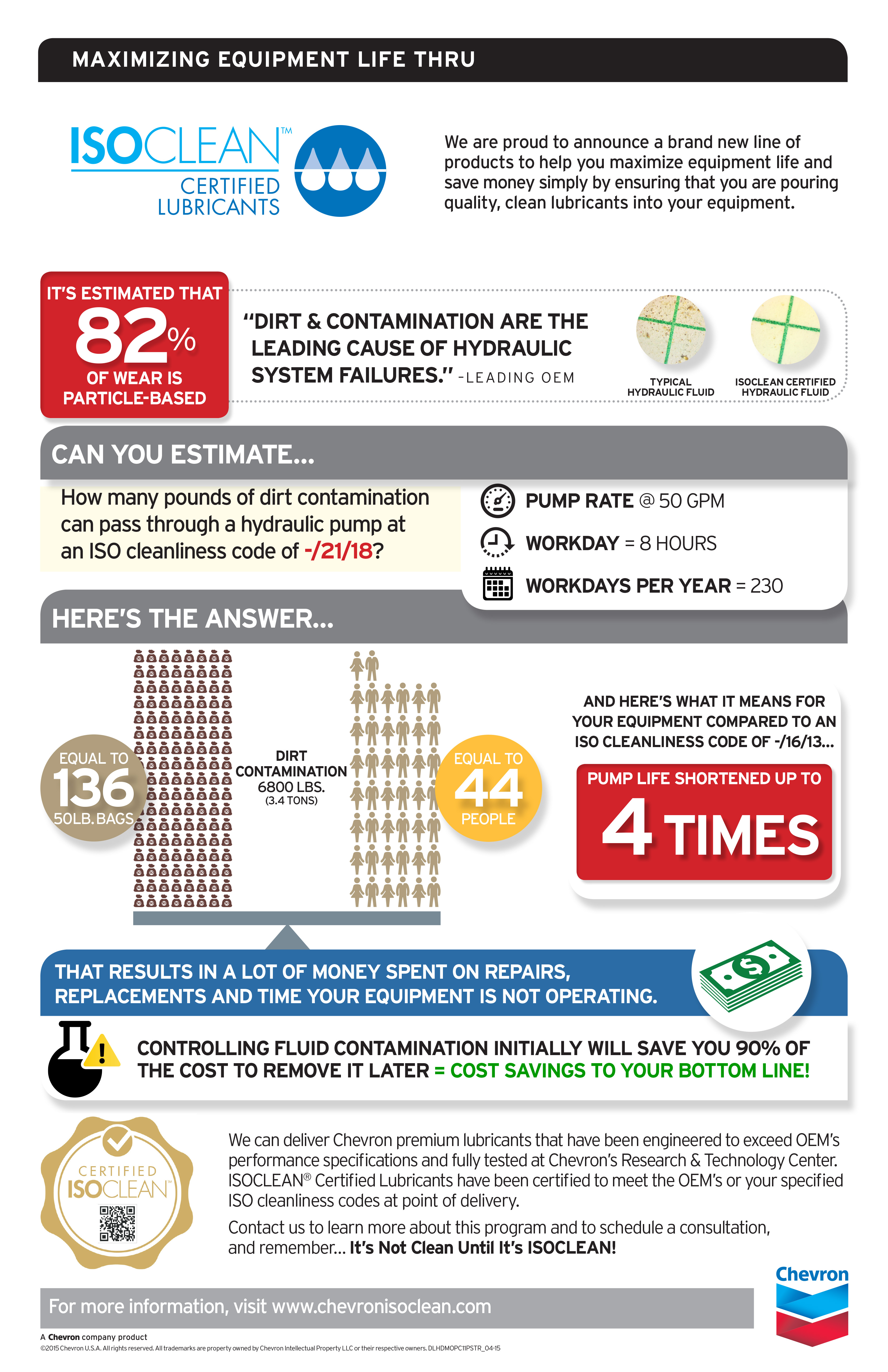Manufacturing, construction, and many other industries depend on hydraulic equipment daily. Consistent maintenance and flushing are vital for long-lasting hydraulic system performance. Learn how to flush hydraulic systems in this step-by-step guide.
What Are Hydraulic Systems?
While hydraulic systems fulfill different uses, they all perform tasks using pressurized fluid.
Hydraulic systems generate power by pumping fluid or oil. The fluid travels through a valve to the cylinder. The hydraulic energy converts the fluid back to mechanical energy. The system can yield substantial power that can be used for large equipment and lifting heavy loads.
Here are some standard uses of hydraulic systems:
- Construction equipment: Forklifts, cranes, pumps, and other machines use hydraulics to raise and lower materials.
- Airplanes: Airplanes use hydraulic systems to run their control panels.
- Automobiles: Many vehicles have hydraulic-powered brake circuits.
Why Should You Flush Your Hydraulic Systems?
Hydraulic systems depend on clean, well-maintained fluid to function correctly. However, oil can build up with dust, sludge, air, and particulate matter over time. These contaminants stress the equipment significantly, causing oxidation, rust, and corrosion. Air contamination can render the fluid more elastic, making it harder to compress and degrading machine performance. Dirty oil can also cause your machine to overheat.
Dirty fluid increases the risk of a machine failure when left untreated. A faulty system can throw a wrench in your operations, and more downtime leads to greater revenue loss. With that in mind, flushing and maintaining your hydraulic system is a must.
Here are some benefits of clean hydraulic systems.
- Productivity and uptime: Contaminated fluids can decrease system efficiency, straining your operations. You can enjoy more reliable machinery and a productive workflow by keeping your hydraulic system clean.
- Cost savings: Excessively dirty, viscous fluids force pumps to work harder. Clean fluid promotes smoother performance, translating to lower operational expenses.
- Longer service life: Old and grimy oil can wreak havoc on your machinery. If this issue goes unresolved, it can eat away at inner mechanisms, overheat the machine, and ultimately cut its operational life short. You can enjoy years of reliable performance by regularly cleaning and flushing your system.
A Comprehensive Guide to Flushing Your Hydraulic Systems
If you are wondering how to flush Bobcat hydraulic fluid or a similar piece of heavy equipment, below are some basic steps, tips, and best practices to remember.
1. Drain the System
Start by draining the oil completely while the fluid is at its standard operating temperature. Examine all lines, cylinders, filters, and any other areas with fluid accumulation. You should also replace the filters during this step.
2. Clean the Reservoir
After installing a new filter, grab a clean, lint-free rag. Thoroughly wipe the reservoir of all grime, deposits, sludge, loose paint, and other lingering particles.
3. Flush the System
 Next, flush the system with clean, less viscous fluid. Experts recommend a Reynolds number of 4,000 to ensure enough turbulence to clear particulate matter from the lines. Stroke the valves periodically to ensure they flush thoroughly.
Next, flush the system with clean, less viscous fluid. Experts recommend a Reynolds number of 4,000 to ensure enough turbulence to clear particulate matter from the lines. Stroke the valves periodically to ensure they flush thoroughly.
Turn on the system to circulate the fluid, letting it cycle through the system at least five times. Drain the fluid as hot and quickly as possible. Change the filters, then inspect and clean the reservoir again.
4. Bleed the Pump
Fill the system to about 75% with fluid, then bleed and vent it. Let the pump run for 15 to 20 seconds, then turn it off and let it sit for roughly a minute. Repeat this process a few times.
With the pressure relief or bypass wide open, turn on the pump and let it run for about a minute. Shut off the pump and let it sit for a minute. Then, close the pressure relief and let the pump run loaded for up to five minutes. If the relief valve lifts properly, it has likely flushed. Remember to avoid operating the actuators during this step. Shut off the pump and let it sit for another five minutes.
Start the pump again, then operate the actuators one at a time, allowing the fluid to return to the reservoir before flowing to the next actuator. Turn off the system after running the last actuator.
5. Fill the Reservoir
Refill the reservoir to 75%, then operate the system in five-minute increments. Bleed air from the system during each shutdown. Note any sounds the system makes to determine if the pump is cavitating or forming air bubbles. Cavitation occurs when liquid converts to vapor at low pressure. It results from inadequate pressure at the suction end of the pump.
6. Conduct Post-Flushing Inspections
Operate the hydraulic system for about half an hour, bringing it to its standard operating temperature. Turn off the system and replace the filters again. Check the reservoir for any signs of cross-contamination. If any are present, drain and flush the system again.
Shut down the system after letting it run for about six hours. Replace the filters, then sample and test the fluid. Increase the sampling frequency until the fluid appears stable.
FAQs About Flushing Hydraulic Systems
Now that you have learned how to flush a hydraulic system on a tractor and other types of heavy equipment, we will answer some other common questions about the hydraulic system flushing process.
How Do I Address Pump Cavitation?
If you notice air bubble buildup around your pump impeller, you can try a few methods:
- Slowing the pump to decrease head pressure and flow rate
- Increasing fluid levels around the suction area
- Reducing the temperature of the pump, fluid, and other components
- Installing a booster pump to take some stress off the primary pump
- Verifying a properly fitted check valve — a backward valve can cause cavitation
How Do I Know if I Am Using the Correct Hydraulic Oil?
Using the wrong oil for your system can have damaging effects, so selecting the right one is critical. Here are the ideal viscosity grades for different hydraulic components.
- Internal and external gears: 25
- Axial pistons: 16
- Radial pistons: 30
- Vanes: 25
If your hydraulic system will run in warm climates during summer and freezing temperatures in winter, it will likely require multigrade oil to maintain acceptable viscosity levels through these temperature fluctuations.
 Choose SC Fuels as Your Hydraulic Fuel Supplier
Choose SC Fuels as Your Hydraulic Fuel Supplier
Knowing how to flush hydraulic lines is essential for system performance, efficiency, and longevity, and using high-quality fuel products is a fundamental part of this process.
Fortunately, SC Fuels is your one-stop shop for fueling products and services. Whether you need premium fuel, expert product selection advice, or even emergency on-site refueling, our commitment to outstanding customer service always shines.
To let us know how we can serve your fueling needs, contact us online or call (888) SCFUELS.





